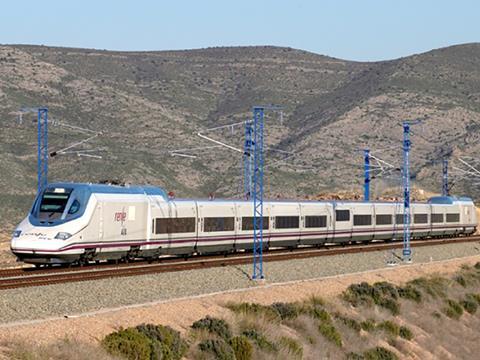
EUROPE: More EU funding has been allocated to enhancing rail links between Portugal and Spain. The EU co-financing is part of a €1·4bn package of European Green Deal projects in seven EU states that was announced by the Commissioner for Cohesion & Reforms Elisa Ferreira in mid-March.
The European Regional Development Fund is to provide €265m towards the completion of the 179 km section of high speed line between the Spanish cities of Plasencia, Cáceres and Badajoz. This forms part of the 715 km Madrid – Lisboa route, which has been designated as part of the TEN-T Atlantic Corridor.
ADIF had hoped to launch high speed services to Badajoz by 2019 using bi-mode trainsets, but it is now likely to be 2023 before through daytime trains start running between Madrid and Lisboa using a mix of new and upgraded lines. Plans for a new high speed alignment at the eastern end of the corridor between Plasencia and Madrid, potentially serving Toledo, are still to be finalised; trains will initially use the existing line.
The Atlantic Corridor is being laid with 1 668 mm gauge sleepers designed for future regauging to 1 435 mm. The railway is intended to carry both passenger and freight traffic; maximum line speed on the new-build sections would be 300 km/h. The route will be electrified throughout and fitted with ETCS Level 2.
The Atlantic Corridor funding comes amid mounting political pressure from Brussels policymakers to enhance rail services in Iberia, especially those across the border between Spain and Portugal. On the Portuguese side, work is already in hand to build a mix of new and upgraded alignment between the port of Sines and Badajoz under what is known domestically as the South International Corridor.

















